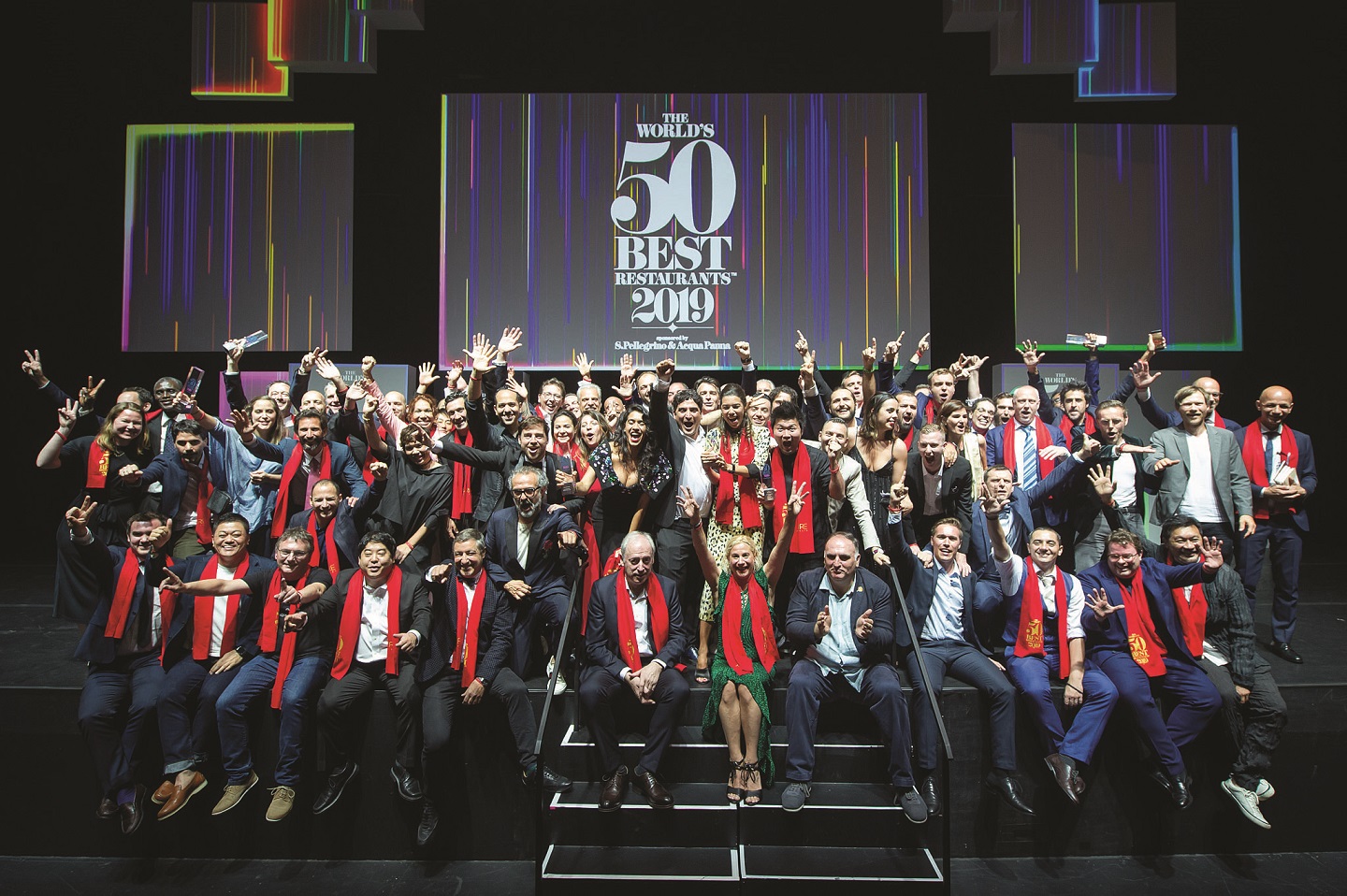
The 18th edition of W50BR was held recently in Singapore — the first time the awards ceremony arrived in Asia (Photo: The World’s 50 Best Restaurants)
marina_bay_sands_property_overview_shot_2.jpg
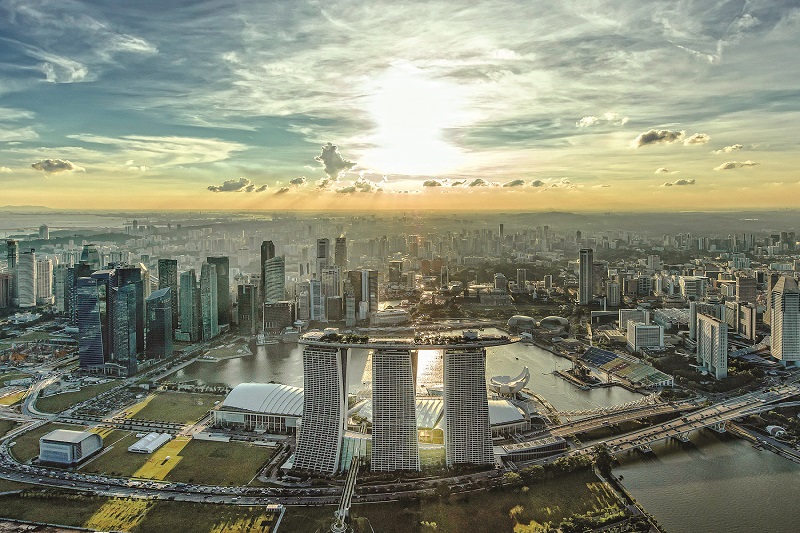
The iconic Marina Bay Sands (MBS) was chosen as the official venue and an incredible week of celebrations to welcome W50BR to this part of the world was held last week, from a glittering awards ceremony to star-studded masterclasses and unique four-hands collaborations.
Over 1,200 guests attended the awards night, which began with cocktails and canapés at the Sands Grand Ballroom before the ceremony proper at Sands Theatre. The event closed with an after-party at neighbouring Marquee, Singapore’s biggest nightclub, famous for its indoor eight-armed Ferris wheel. The main reason the awards is not without controversy lies in its continued allowance for lobbying, meaning that restaurants with the budget to engage a slick PR outfit can sway those on its thousand-strong voting panel, comprised of industry peers, to pop by for a meal, sometimes on the house but often with all the bells and whistles on.
Tension was at its highest in 2015 when a protest group called Occupy 50 Best was launched to challenge the rating system as well as protest against favouritism, opacity and sexism. In this light, W50BR released its statistics ahead of the ceremony, showing a voting panel that is 50/50 gender balanced and consisting exclusively of restaurant experts, 34% made up of chefs and restaurateurs; 33% food writers and 33% well-travelled gourmets. Each voter can select 10 restaurants and must have visited the restaurant at least once in the past 18 months.
w50best
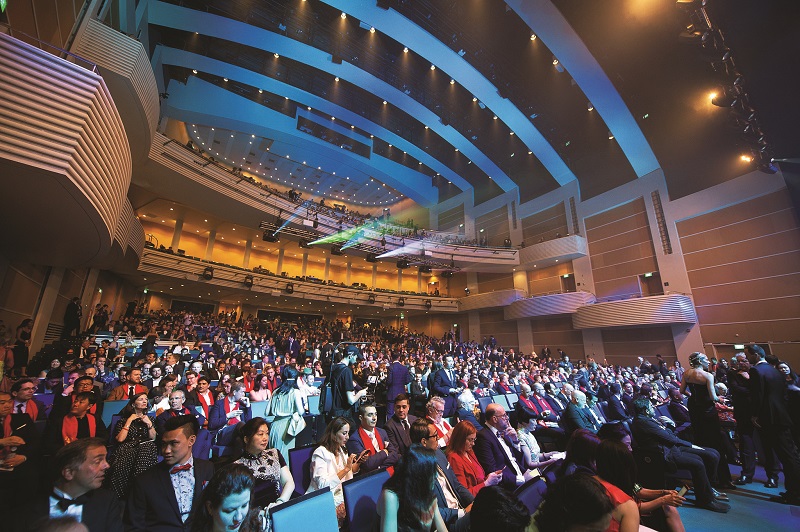
This year featured 1,040 worldwide voters with a promise by W50BR to feature at least 25% new voters every year. Deloitte was also engaged to ensure independent adjudication, transparency and a structured and audited voting procedure, although the same complaints still swirled about, from diversity (or lack of), both in listed chefs and jury members, to the obvious lack of Asian cuisine restaurants on the list.
This year, for example, marked only the second time ever in almost two decades that a Chinese restaurant made the list. Hong Kong’s The Chairman came in at No 41, 15 years after Melbourne’s Flower Drum was listed at No 49. Japan, however, was represented by Den at No 11 and Narisawa at No 22. Shanghai’s Ultraviolet by Paul Pairet (No 48) and Bangkok’s Sühring (No 45 and a newcomer) are listed, although they serve avant-garde French and contemporary German food respectively. Gaggan, also located in Bangkok, remains the only Indian restaurant to ever place in the top 50 and has consistently made the list five years in a row now (No 10 in 2015, 23 in 2016, 7 in 2017, 5 in 2018 and 4 this year). “It’s the fine-dining restaurants that benefit the most from the exposure,” Singapore-based food writer and chef David Yip adds. “Without W50BR, the voters, journalists and their readers would hardly have had the chance to know of these places.
“Obviously, some of the restaurants spent a lot more money wooing voters who, over the past 12 months, were invited to Moscow, Bangkok, some Spanish cities and towns and other countries to be wined and dined. These efforts definitely paid off, as seen in this year’s list.”
Another bone of contention arose in the fact that this year saw the introduction of a new “The Best of the Best” rule change, whereby a previous winner is no longer able to participate and, instead, moves to a Hall of Fame — a culinary cop-out, if you will, but one that saves an already-established restaurant the perils a drop in ranking can wreak on both business and reputation. Daniel Humm of New York’s Eleven Madison Park observes: “None of us has ever believed there’s truly a best restaurant in the world [anyway]. Many chefs are doing amazing things and we are part of this community. It’s not so much about the ranking, though it’s nice to be No 1. The list is not so much about performance but a moment and it cannot be our moment forever. It’s much more important to have amazing chefs [continue] to be involved. That is good for everyone and I think [it is also something] everyone wants.”
w50br19_award_ceremonyjon_2859.jpg
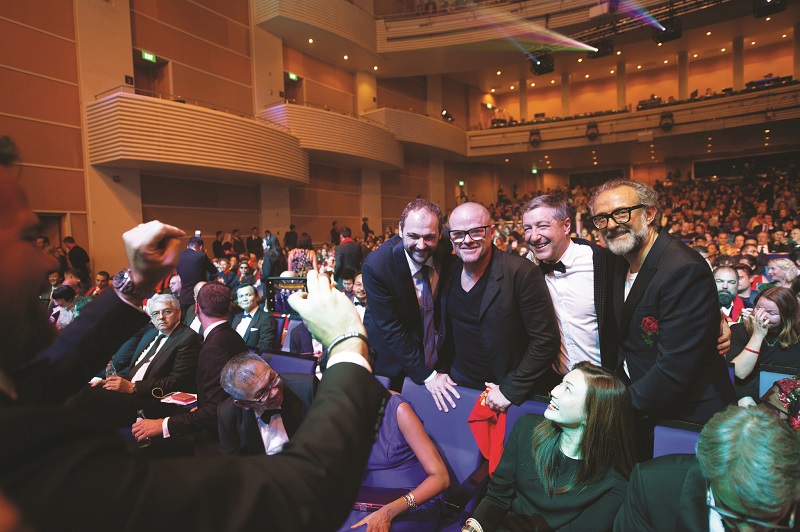
Joan Roca, one third of the Roca brothers who run El Celler de Can Roca and has been a constant in W50BR’s top three annually since 2011, noted via an interpreter: “The fact that we are not competing does not mean we are not committed to the same excellence, creativity and desire for people to enjoy a gastronomic experience.”
“There’s no doubt [the list] is good for business,” adds Benjamin Yong, chief eating officer of The Big Group, who flew into Singapore specifically for the event. “[Getting on the list] practically guarantees filling up those quiet Monday or Tuesday nights, with a nice bump to your wait list.” David Dudi Califa, famously known on Instagram via The Hungry Tourist handle, who brings people from all over the world together for culinary adventures revolving around mind-blowing dishes, extraordinary chefs and nigh-impossible reservations at the best restaurants, states: “It’s no secret that I have a great deal of criticism of the W50BR list, of its value and relevance, or of the notion that there is ‘one best restaurant’.
“But there’s one thing I cannot deny W50BR is the recognition it bestows on chefs and people like my good friend, Victor Arguinzoniz. I am so happy for the validation he received when his Asador Extebarri (in Spain’s Basque Country) was ranked third in this year’s list. So, what W50BR does best is recognise and expose culinary talent and creativity, [for] how else can we hear about such places and plan our pilgrimage to them?”
On the poor Asian representation, Yong shrugs off the gripes, saying: “It’s still an educational work-in-process. Remember the days when Western food — from pasta to steak, French and Italian — was all lumped under one category? This will change over time and it is good to keep in mind that these awards, after all, do give recognition and exposure to those who have worked so hard. There is definitely more positives than negatives to awards and lists such as this.”
Complaints aside, it is hard not to be warmed by the reflected glory of Mauro and Julia Colagreco as their restaurant, Mirazur, in the seaside town of Menton, France, finally took home the No 1 spot after placing third last year. In a town better known for its annual lemon festival, Mirazur, judging from post W50BR trends, can now expect to be an equally huge contributor to Menton’s spike in visitor arrivals.
mirazur_1.jpg
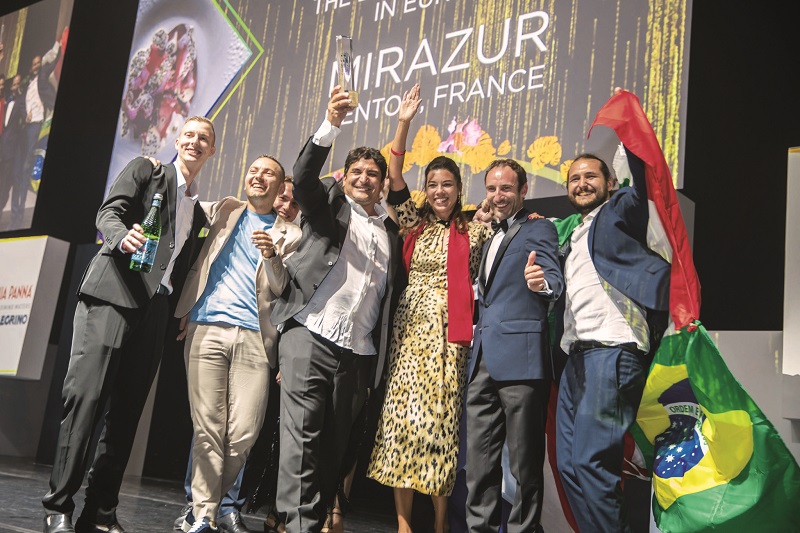
For the Italian-Argentine chef and his Brazilian wife, it was the icing on the proverbial cake, as this accolade comes just months after he was awarded his third Michelin star, making him the only non-French chef in France ever to be awarded the Holy Grail of cuisine, not to mention enabling France to top the W50BR list since its establishment 18 years ago. “Wow, wow, wow, wow,” Colagreco said at the post-awards press conference at Koma, MBS’ newest Japanese concept restaurant by the Tao Group, with a look that could be described as equal parts dazed, teary-eyed and overjoyed. “What a crazy year — three Michelin stars and a No 1 in the world, all in the same year. It’s a year I will remember forever.”
Celebrated for his refined and inventive take on Mediterranean-inspired food as demonstrated by dishes like salt-crusted garden beetroot with caviar cream, brioche of potatoes with melting egg and white truffle or oyster with tapioca, shallot cream and pear, Colagreco cut his teeth with French legends Alain Passard at Arpège and Alain Ducasse at the Hotel Plaza Athénée before ending up in Menton “by chance”. In a world increasingly polarised by racial issues, it was heartening to see the Mirazur team bound up on stage as the world’s best restaurant was announced, armed with a banner made out of the Argentine, Italian, Brazilian and French flags — a fitting accessory to what has truly been an international journey for Mirazur. “Food is a universal language,” muses Ian Wilson, Marina Bay Sands’ senior vice-president of non-gaming operations. “And the way it brings people together, regardless of borders and cultures, is a timely reminder of what the world needs now.”
To onlookers, Colagreco’s triumph also pays tribute, albeit subtly and posthumously, to his original mentor, the troubled but talented Bernard Loiseau who took his own life in 2003 after newspaper reports hinted at his restaurant’s imminent loss of its three Michelin star status. Maybe W50BR got it right after all. The highest echelons of culinaria should be a place of community and camaraderie, where talent is celebrated and nurtured, versus being hoisted up only to be allowed to free-fall thereafter. In that light, perhaps it is time to put aside the grumbles that only five female-run restaurants made the list or how the UK painfully slid down the overall rankings, and just remember that making the list is, as articulated by Humm earlier, in the end, all about a moment. And for Colagreco and his crew at Mirazur, this is undoubtedly their moment. So, let them have it ... with open hearts.
This article first appeared on July 8, 2019 in The Edge Malaysia.


